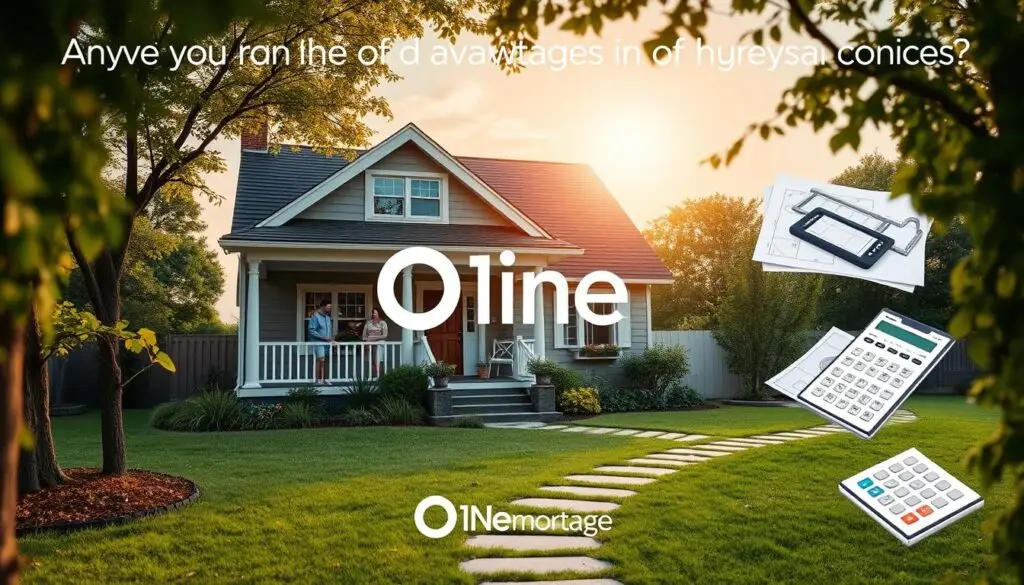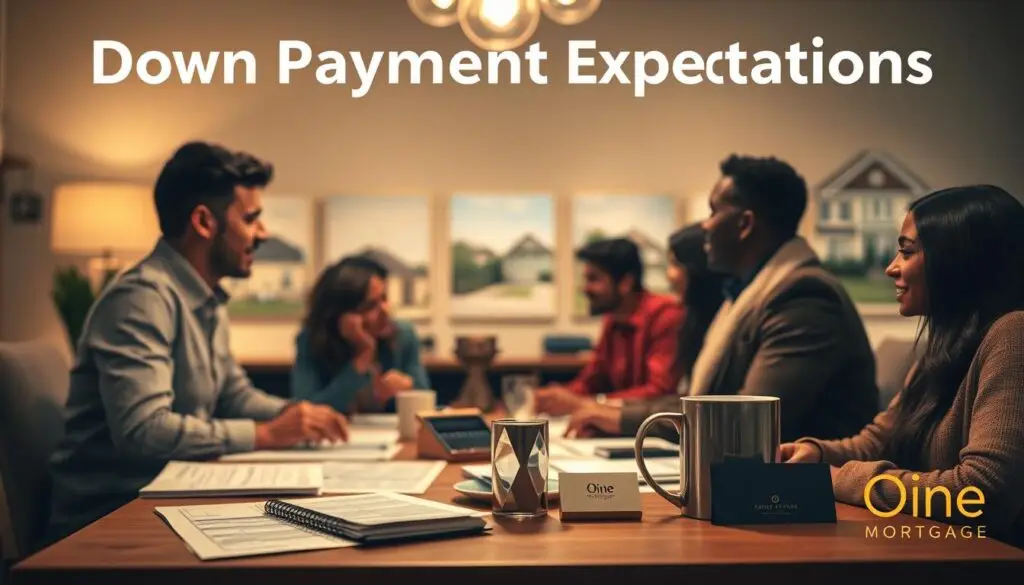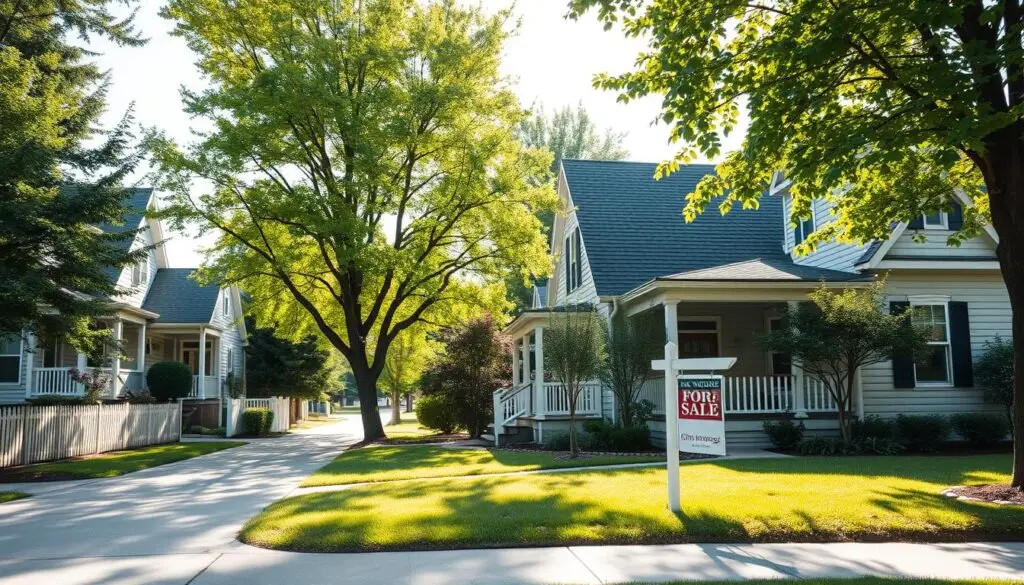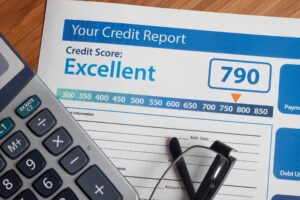Embarking on the home buying journey can be one of the most significant milestones in a person’s life. When it comes to making this dream a reality, conventional home loans emerge as a beacon of hope, illuminating the path to homeownership with unparalleled financial flexibility. We understand that choosing the right mortgage choice can be daunting; however, the diverse array of terms and down payment options offered by conventional loans cater to a wide array of personal financial landscapes. As we navigate this course together, you’ll soon discover how these loans, facilitated by esteemed private lenders, including banks and mortgage companies, are designed to fit your unique situation.
Unlike their government-backed counterparts, conventional home loans stand out by not being insured by federal entities. This distinction often results in more competitive rates, offering prospective homeowners like us an advantage. Whether you’re looking to put down roots in a primary residence, seeking a getaway in a second home, or investing in potential rental properties, conventional loans provide the versatility required to adapt to various financial conditions. Their popularity as a home financing solution speaks volumes about their benefit to buyers across the nation. Join us as we embark on a transparent and insightful conversation about how these loans might pave the way to your homeownership aspirations.
Key Takeaways
- Conventional home loans offer an array of terms and down payment options, promoting bespoke financial solutions.
- Private lenders, such as banks and mortgage companies, are the conduits for these non-government insured loans.
- Competitive rates are a hallmark of conventional loans, giving borrowers an edge in their mortgage choice.
- Versatility in funding primary residences, second homes, or investment properties highlights the adaptability of conventional loans.
- The journey to homeownership is well-supported through the strategic advantages of conventional loans.
Understanding the Basics of Conventional Loans
When exploring mortgage solutions for purchasing a home, conventional loans often stand as a primary choice for many borrowers. These loans are facilitated primarily through private lenders and are not insured by the federal government, making them a straightforward option for those who meet the necessary criteria.
Conventional loans offer varied mortgage rates and loan terms, typically spanning 15, 20, or 30 years. This flexibility allows borrowers to choose a structure that best fits their financial situation. A distinguishing feature of conventional loans is the ability to influence the interest rates and monthly payments through the size of the down payment. Generally, higher down payments result in more favorable rates because they reduce the lending risk for providers.
One of the pivotal factors in securing a conventional loan is the borrower’s credit score; a higher score can lead to better mortgage rates and terms. Therefore, prospective homebuyers should focus on enhancing their financial standing well ahead of the loan application process. Besides credit scores, lenders will evaluate the borrower’s income and the down payment amount to determine eligibility and conditions for both fixed-rate or adjustable-rate mortgage options.
| Loan Term | Typical Down Payment | Potential Mortgage Rate |
|---|---|---|
| 15 years | 20% | Lower |
| 20 years | 10% | Medium |
| 30 years | 5% | Higher |
In summary, conventional loans offered by private lenders are characterized by their lack of government backing, diverse loan terms, and influence of down payments on mortgage rates. These elements underscore the versatile nature of conventional loans, making them suitable for various financial situations and property types.
Comparing Loan Types: Conventional vs. Government-Backed
When exploring home financing options, understanding the distinction between conventional and government-insured loans is pivotal. Key differences in mortgage insurance, loan limits, and creditworthiness criteria can significantly impact your choice and long-term financial planning. Let’s delve into how each type satisfies different borrower needs.
Differences in Mortgage Insurance Requirements
Conventional loans often present fewer hurdles in terms of mortgage insurance. Typically, if you can make a down payment of 20% or more, you may not be required to pay for mortgage insurance at all. Conversely, government-insured loans like FHA often mandate mortgage insurance regardless of the down payment size, which can add to the total cost of your loan over time.
Impact of Loan Limits on Borrowing
The ceiling for borrowing, known as loan limits, is another crucial factor to consider. Government-insured loans typically have set limits that may not accommodate higher-value properties, especially in more expensive housing markets. On the other hand, conventional loans offer higher loan limits, which provides flexibility and a greater range of buying options.
Eligibility Criteria Across Loan Types
Assessing creditworthiness plays a fundamental role in securing a loan. Conventional loans are often more stringent in their requirements, demanding higher credit scores. This focus on creditworthiness can often reward borrowers with better interest rates and lower fees. In contrast, government-backed loans are generally more accommodating for those with lower credit scores, making them a favorable option for first-time homebuyers or those with modest credit histories.
Each type of loan serves specific needs based on your financial standing and buy-power in the housing market. By thoroughly understanding these differences, you can make a well-informed decision that aligns with your long-term financial goals.
Advantages of Choosing Conventional Loans
When navigating the path towards homeownership, understanding the advantages of conventional loans is crucial. These loans frequently offer lower interest rates, making them a financially savvy choice for many borrowers. The appeal of conventional loans lies not only in these competitive rates but also in the flexible term lengths and down payment options they provide, paving the way for financial freedom.
One of the key benefits is the variety in term lengths. Whether you’re looking for a quick 10-year payoff or a more traditional 30-year term, conventional loans allow you to tailor the repayment to suit your financial scenario. This flexibility can significantly affect both the total interest paid over the life of the loan and monthly payment amounts.
Additionally, conventional loans offer diverse down payment options. Borrowers can choose to put down as much as they can afford, which can reduce the loan amount and possibly eliminate the need for private mortgage insurance (PMI), further reducing monthly expenses.
Here’s a brief look at how various down payment percentages can influence the financial dynamics of a home purchase:
| Down Payment Percentage | Estimated Monthly Payment* | Total Interest Paid* |
|---|---|---|
| 5% | $1,400 | $250,000 |
| 10% | $1,320 | $230,000 |
| 20% | $1,100 | $200,000 |

The Role Credit Scores Play in Conventional Loans
Understanding the pivotal role that credit scores play in securing conventional loans is essential for any potential homeowner. A higher credit score not only boosts your creditworthiness but also affects the mortgage terms and interest rates offered by lenders. Let’s delve deeper into how your credit score influences your mortgage options and what strategies can enhance your financial standing.
Implications for Loan Interest Rates
When it comes to conventional loans, the interest rates you’re eligible for are directly tied to your credit score. Lenders use this score as a metric to determine the level of risk associated with lending to you. Typically, a credit score of 620 or above is preferred to secure more favorable mortgage terms. The higher your score, the lower the interest rates you might qualify for, making your loan less costly over time.
Strategies for Enhancing Your Credit Standing
Improving your credit score is a proactive strategy to enhance your eligibility for better mortgage terms. Simple actions such as paying bills on time, reducing your debt-to-credit ratio, and regularly checking your credit report for errors can significantly impact your score. Additionally, avoiding new credit applications before applying for a mortgage can preserve your current score from potential drops.
| Credit Score Range | Typical Interest Rates | Impact on Mortgage Costs |
|---|---|---|
| 760+ | Lowest | Significantly lower monthly payments |
| 700-759 | Low | Reduced monthly payments |
| 620-699 | Average | Standard monthly payments |
| Below 620 | High | Increase in monthly costs |
Decoding the Debt-to-Income Ratio
When applying for a conventional loan, understanding your Debt-to-Income (DTI) ratio is essential for demonstrating financial responsibility. This metric is crucial in lender assessments, as it compares your total monthly debt payments to your gross monthly income, reflecting your ability to manage monthly expenses alongside potential new debt from a mortgage.
We emphasize the importance of maintaining a DTI that reassures lenders of your stability and reliability. An optimal DTI not only favors your loan approval chances but also affects the interest rates offered. Let’s look more closely at how your gross monthly income interplays with your existing debts and potential new ones, establishing your creditworthiness.
| Component | Impact on DTI | Significance |
|---|---|---|
| Gross Monthly Income | Base Value | Higher income improves DTI |
| Total Monthly Debt | DTI Increase | Must be well-managed |
| New Mortgage | DTI Projection | Decides affordability |
In our commitment to guiding you through the homeowner’s journey, we advise a thorough analysis of your financial obligations and income to optimally position yourself for a favorable lender assessment. Being proactive about managing your debts and understanding the crucial role of gross monthly income will enhance your financial stability, paving the way for successful homeownership.
Exploring Conventional Loan Requirements
When considering a conventional loan, understanding the benchmarks for loan eligibility and necessary financial commitments is crucial for prospective homebuyers. We delve into aspects such as down payment requirements and the implications of different loan term selections, which are vital for planning and securing favorable loan terms.
Minimum Down Payment Expectations
The Down Payment is a pivotal element in acquiring a home through a conventional loan. Generally, the minimum required down payment can range from 3% to 20%, influenced by the buyer’s credit history and the loan type. A higher down payment might reduce the need for Private Mortgage Insurance (PMI), ultimately affecting the overall cost of the loan.

Navigating Through Loan Term Choices
Choosing the right Loan Term Selection plays an essential role in determining monthly payments and interest rates. Common term lengths include 15, 20, or 30 years. Shorter terms often result in higher monthly payments but lower total interest over the life of the loan, which can enhance your long-term financial stability.
| Loan Term | Monthly Payment | Total Interest Paid |
|---|---|---|
| 15 years | Higher | Lower |
| 30 years | Lower | Higher |
Understanding these components of loan eligibility, from down payment to loan term options, is fundamental in preparing you for the financial responsibilities of homeownership. Properly assessing these factors can lead to better decisions and more predictable financial outcomes in your home buying journey.
Calculating the Costs: Rates and Mortgage Insurance
Understanding the financial implications of securing a conventional loan is crucial for prospective homeowners. Key among these are mortgage insurance costs, home appraisal fees, and overall the borrowing costs. These factors can significantly influence the total expense of purchasing a home and the ongoing financial commitments required.
Mortgage insurance, for instance, is often necessary when the down payment is less than 20% of the home’s purchase price. This insurance protects lenders from the potential default of the borrower, but it also adds to the monthly expenditure of homeowners. To clarify how these costs may impact your mortgage payments, let’s break down the essential expenses associated with obtaining a conventional loan.
| Cost Category | Description | Typical Cost |
|---|---|---|
| Mortgage Insurance | Insurance required to mitigate the risk of default on a loan with a down payment of less than 20%. | Varies based on loan amount and down payment percentage |
| Home Appraisal | An assessment to determine the value of the property. Essential for loan amount determination. | $300 – $600 |
| Borrowing Costs | Includes interest rates and other fees associated with securing the mortgage. | Dependent on loan amount, term, and interest rate |
While these figures provide a general guideline, it’s important to speak with a lender to get an accurate understanding of what these costs might look like based on your specific financial situation and home purchase price.
Moreover, ensuring a high credit score and sizable down payment can significantly reduce both the interest rates and mortgage insurance costs. This reduction can lead to substantial savings over the life of the loan, emphasizing the importance of financial planning prior to a home purchase.
Conventional Loans Application Process
The journey to securing a conventional loan involves several key phases, beginning with the crucial step of Loan Pre-Approval. This early stage is essential for assessing your financial health and establishing your borrowing limits. Once this phase is successfully navigated, the actual Loan Application process commences, where detailed Financial Documentation is required to further verify your creditworthiness and financial stability.
Steps to Achieving Pre-Approval
Obtaining Loan Pre-Approval is your first step towards homeownership under a conventional loan scheme. This involves a preliminary Creditworthiness Evaluation by lenders to determine if you meet the financial criteria necessary for the loan amount you’re aiming to secure. This is not only beneficial for gauging what you can afford but also positions you as a serious buyer in the competitive real estate market.
Documenting Your Financial Health
As part of the Loan Application, you are required to present comprehensive Financial Documentation. These documents typically include recent pay stubs, tax returns, employment verification, and records of your assets and liabilities. This thorough documentation helps lenders create a detailed financial profile necessary to finalize loan approval.
| Document | Purpose | Importance Level |
|---|---|---|
| Pay Stubs | Income Verification | High |
| Tax Returns | Income Consistency Check | High |
| Employment Verification | Job Stability Confirmation | Medium |
| Bank Statements | Assets Verification | High |
By meticulously preparing for each step of the application process—from Loan Pre-Approval to the final submission of your Financial Documentation—you enhance your chances of obtaining favorable loan terms and ultimately, securing your future home.
Property Types You Can Finance with Conventional Loans
When it comes to financing your next real estate investment, understanding the scope of property types eligible under conventional loans is crucial for making informed decisions. We recognize that our clients have varied property interests, and our objective is to facilitate their aspirations, whether it involves acquiring a new family home, purchasing a getaway retreat, or expanding real estate portfolios. Conventional loans are designed with a level of flexibility that caters to a wide range of needs, opening doors to several types of property investments.
Financing Primary and Secondary Homes
One of the pivotal elements of primary residential financing is the ability to secure a home where your roots will grow. Conventional loans enable this fundamental desire by funding primary residences with favorable terms. But it doesn’t end there; second home mortgages are also within reach. A second or vacation home can provide a sanctuary for relaxation or act as a potential source of rental income. These conveniences exemplify how conventional loans serve not just a living space, but a lifestyle.
Investment Properties and Land Purchases
Dipping into Real Estate Investments? Rest assured that conventional loans could be your ally in purchasing residential properties for rental or resell purposes. Land acquisition, a critical aspect of real estate development and investment, is also facilitated through conventional loan frameworks. With our in-depth knowledge and resources, we help investors navigate the complexities of acquiring land, be it for building from scratch or holding as a long-term asset. Our approach ensures that your ventures in real estate are both rewarding and fulfilling.







